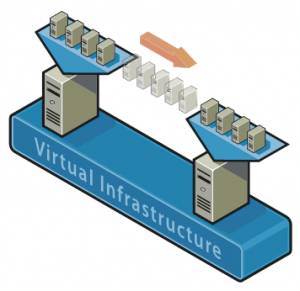Virtualization and Single Sign-On
The BYOD approach is often most successful when used in tandem with a virtualization architecture. Simply put, a virtualization architecture means that a physician is not actually interacting with software on the physical machine in front of him or her, but a representation of it served up by a server in a secure location, often on the hospital premises. Think of it as using binoculars to look at the screen of a computer located in a building across the street, only that you are able to enter information as if that computer were directly in front of you.
From an information security standpoint, this is more secure than carrying potentially sensitive information around with you on your day-to-day device. This information could be compromised if ever the device were stolen or misplaced. Such devices are, in effect, used as thin clients to access a suite of applications virtually. If this can be implemented with a single sign-on solution that is robust and non-intrusive, then we have the makings of a truly evolved user experience.
Think of it… being able to sit down at a PC and log in instantaneously by way of a biometric scan or a “tap-in” system in which an FRID-enabled physician’s ID badge initiates the login on your behalf. The screen then instantaneously opens a window into your hospital system’s virtual desktop, instantaneously logging you in to your EMR, upon which you can commence writing orders and/or documenting a patient encounter. The session is then closed and/or suspended with a tap-out or biometric logout, allowing you to continue with your day.
This episodic, instanced, virtual desktop access is slowly becoming the norm, and represents a step towards true decoupling from the patient’s chart. Much has been written about the promise of electronic medical records freeing up physicians’ time to allow for increased interaction/education with the patient. In my experience, we have yet to reach this panacea. However, by integrating systems (biometrics and single sign-on technologies) and being respectful of medical staff workflows, we are slowly, surely, making gains.
(Image courtesy of TechBabu)
